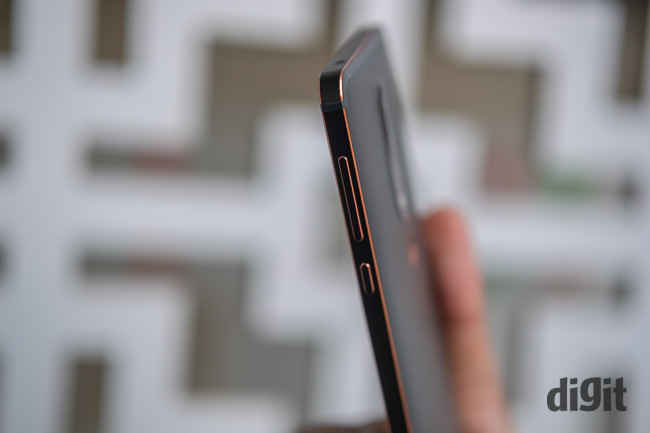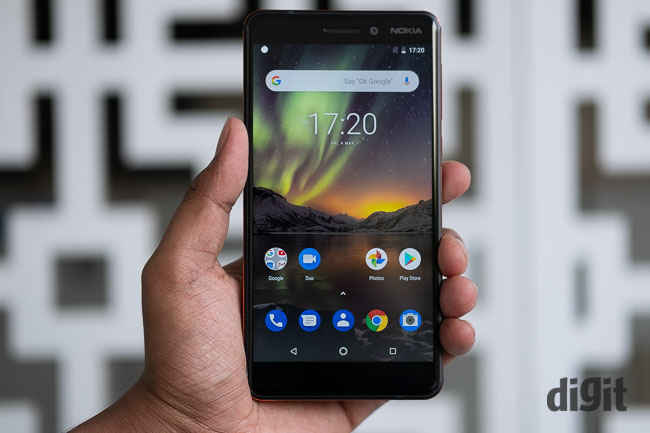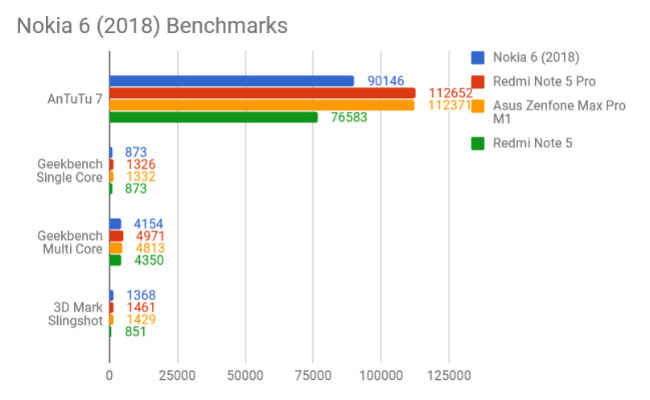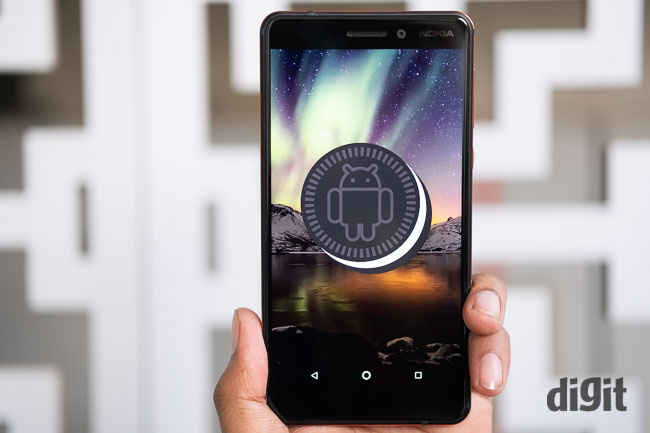Nokia 6 (2018) Review : A distinct echo of the Nokia of the past
The Nokia 6 is a distinct echo of the Nokia of the past. With a skillful, minimalist design that scores high on durability and fast performance to go with it, the Nokia 6 is the true flagbearer of the iconic brand that only recently decided to tread the Android market.
Looking at the phone, it’s apparent that Nokia is on the right path to earning back the trust it used to once enjoy before the smartphone revolution gathered momentum. The sturdy build quality, premium design and promise of regular updates all point to Nokia of the yore and it’s track record of making stellar smartphones. Between last year’s Nokia 6 and the new one, there has been some evolution. It is now more of a mid-ranger than its predecessor as it packs a mid-range chipset, comes with more RAM and rocks a USB-Type C port. There are other small, but meaningful changes to the phone that should make the device a popular choice. But then are more established players like Xiaomi, Asus and Honor locked in cut-throat competition. HMD’s Nokia is still newer as compared to that and being out of the game for quite some time, does the Nokia 6 (2018) pack enough firepower to seal the second coming of Espoo? We find out.
Design
Looking at the new Nokia 6, it’d be difficult to say the company missed out on the major part of the Android revolution. In fact, HMD has drawn heavily from Nokia’s lineage of making durable smartphones and built this phone like a tank. It isn’t as indestructible as its old offerings, but this one can take some damage and still live to tell the tale. Hold the phone and you’ll know how well-built it is. The Nokia 6 is constructed out of a single block of aluminium polished to give it a smooth matte finish. There are thin, shiny copper accents running around the edges, around the camera unit and the fingerprint sensor at the back. The finish is similar to the more-expensive Nokia 7 Plus and thanks to its design, it looks much different from the usual unibody designs seen in phones by Xiaomi, Asus, Honor and the likes.
In a market as crowded as the mid-range segment, it’s very difficult to stand out. As far as looks are concerned, the Nokia 6 has enough flair to remain distinguishable from the rest. However, it doesn’t have the in-vogue 18:9 display and sports only a single camera unit where most phones at that price are offering a dual camera stack. HMD is perhaps hoping that the reliability of a clean UI and superior camera hardware will be enough to attract the consumers.
The Nokia 6 is nearly flat from the front while the back is slightly curved making it a nice fit in the hands. However, the edges are quite sharp and after prolonged use, the phone tends to dig into the palms. The ergonomics aren’t as good as the competition, but it makes up for it in terms of build quality. Nokia has made some adjustments to the design that allow the phone to withstand some damage. For example, the display has a 2.5D protective glass on top that doesn’t stretch all the way to the edges. As a result, the slight gap between the glass and the metal frame provides a cushion to the display in case it falls. The smooth matte finish also means it won’t scratch easily on the back. It does tend to gather smudges though. While the Nokia logo below the fingerprint sensor is etched into the body, the Android One logo seems like it might rub off after prolonged use.
What’s particularly good is how Nokia managed to eliminate the ugly camera bump from the body. The camera unit gently slopes upward all the while remaining flush with the body. Also the antenna lines at the back are almost indistinguishable from the rest of the body and if you aren’t looking closely enough, you will not even notice them.
It’s a kind of uninterrupted, refined and premium design one expects from a Nokia phone and for the most part, the Nokia 6 (2018) delivers on all fronts.
Display
The Nokia 6 (2018) bucks the ongoing trend by offering a traditional 16:9 display, which makes the phone look wider and shorter. The phone ships with a 5.5-inch IPS LCD panel with full HD resolution and 403 ppi pixel density. As a result, content on the screen looks crisp and vivid with good viewing angles. The display is quite similar to last year’s Nokia 6 with decent black levels. The whites are quite cooler with a noticeable colour shift towards blue. However, this is one of the brightest panels we have seen on a phone at this price range with a calculated luminescence of 198 lux. However, the display is quite glossy and reflective, making legibility under bright lights a little less than stellar. Unlike the Redmi Note 5 Pro and the new Zenfone Max Pro which have better suppression of reflections, the Nokia 6 offers a lot of screen glare which isn’t a good thing. Nevertheless, it’s an acceptable trade-off considering how bright and functional the panel is.
Watching movies and videos on the display is an enjoyable affair to say the least. While it won’t offer as much real estate as an univisium panel, it makes up for it in terms of clarity and sharpness. The colour tones are quite like an OLED panel with higher contrast and deeper colours. Like last year’s Nokia 6, the panel on its successor is definitely functional and more, even though it isn’t an 18:9 panel.
Performance and UI
One of the major criticisms the original Nokia 6 faced was in its performance. It offered entry-level hardware at the price of a mid-range phone, which was quite atrocious. HMD has paid heed to the criticism and powered the Nokia 6.1 with a Qualcomm Snapdragon 630 chipset which also powers the more expensive Moto X4. It’s a relatively rare chipset and is the predecessor to the Snapdragon 636 that has been breaking all sorts of records in the mid-range segment. The chipset rocks eight cores offered in the big.LITTLE arrangement with a max clock speed of 2.2GHz. Although unlike the newer SD636, it doesn’t come with the custom Kryo cores. However, the chipset is still built on a 14nm process which means the power efficiency is higher.
The chipset is coupled with 3GB of RAM and to 32GB of onboard storage. The memory and storage has remained unchanged rom last year, and being priced higher on the mid-range scale, it doesn’t offer as much firepower as its most formidable competitor — The Redmi Note 5 Pro. Even then, while using the phone, more often than not, I found myself having around 1GB of RAM free which means the RAM is optimally utilised leaving some breathing space for more intensive performance.
Benchmark reports evidently peg the Nokia 6 (2018) lower than the competition. The phone clocked a score of 90146 on AnTuTu 7.0 and on Geekbench Single and Multi Core, it scored 873 and 4154 respectively. In terms of graphics, it came very close to beating the Redmi Note 5 Pro with a 3DMark Slingshot score of 1368. While it does lag behind other phones in synthetic benchmarks, the Nokia 6 (2018), the gap is much lesser than last year.
The raw performance results may be lesser, but the Nokia 6 (2018) more than makes up for it by offering a clean, simplistic and optimised user interface. The phone is Android One certified which means both HMD and Google has put efforts to optimise the hardware to run the Android operating system. Stock Android offers a lot of advantages over other heavily-modded UIs. It takes up much fewer resources and there’s no duplication of apps. The entire suite of Google apps is made available, but more importantly, apart from the Pixel devices, Android One devices receive the most timely updates. The Nokia 6 (2018) already updated to the April 2018 security patch.
In real-world usage, the phone the expected waiting times for heavy apps to open. But once it does, there are no stutters whatsoever. The UI is swift enough, allowing you to flick through the app drawer without a drop in frame rate. HMD has tuned the hardware underneath to sing well with the software and as a result, even if you minimise a game to reply to a message, there won’t be much of a lag.
Based on performance alone, the Nokia 6 (2018) is a drastic improvement over its predecessor and for the most part, it can compete neck-to-neck with the best of the lot in the mid-range segment.
Camera
HMD has kept the camera specifications mostly unchanged in the Nokia 6.1. It relies on the same 16-megapixel sensor with f/2.0 aperture and 1.0um pixel pitch. What’s changed is the addition of Zeiss optics lenses and the return of the Nokia Pro camera app. As a result, despite not tinkering with the hardware much, the imaging prowess has improved a lot. The Nokia 6 (2018) was consistent, reliable and handy in taking photos with some caveats.
In daylight, the camera performance is at par with the competition in the mid-range. The colours come out quite saturated with an emphasis on the blues and greens. Trees and skies, as a result, look unrealistically aesthetic. There’s also good clarity in the shots. Perhaps the new lens here makes a difference. There’s expected highlight clipping but not as much as the new Zenfone Max Pro M1 while the dynamic range is just short of that on the Redmi Note 5 Pro.
Having a single camera module, there’s no depth mode on the Nokia 6.1, but the f/2.0 aperture offers fairly shallow depth of field for close-up shots. The colours and details in macro-shots came out surprisingly good, surpassing its predecessor by miles. Nokia has also added an HDR mode that works to increase the details in the shadows.
The weakness starts showing when the light is poor. The camera’s low-light performance still can’t match up to the likes of the Redmi Note 5 Pro. While the Nokia Pro Camera app helps to make changes to the ISO and Shutter Speed easily, the results leave a lot to be desired. Noise start creeping in from ISO 400 while a shutter-speed of 1/2s will result in blurred photos. There’s no stabilisation in the camera which shows in the low-light shots.
A word of appreciation needs to be given to HMD for reviving the Nokia Pro Camera app for its Android phones. The app used to be a big hit among Nokia Lumia fans for its simple UI and the pro mode. You get the option of tweaking the shutter speed, ISO, white balance and the focus simply by swiping up from the camera screen while a right swipe switches to the video mode.
The ‘bothie’ feature that Nokia introduced with the Nokia 8 last year has been carried forward to the Nokia 6 (2018) as well. It fires both the front and rear camera at the same time to capture a dual-shot. The app can also stream live directly to Facebook and YouTube.
As for the front camera, the selfies come out decent with the 8-megapixel shooter with f/2.2 aperture. The facial details are well preserved and the background exposure is kept under control. It certainly won’t qualify as a selfie-centric phone but will give you the social media gratification that you’re looking for.
Battery
Being a stock Android phone powered by a 14nm chipset, the power efficiency of the new Nokia 6 should theoretically be on the higher side. However, the 3,000mAh battery will not last you the full day. Often times, I found the phone losing charge by the end of a work day with ample use of the camera, social media browsing, a little gaming and shooting videos. Thankfully, the phone supports Qualcomm’s Fast Charging and tops up the phone in around 90 minutes.
Bottomline
Using the Nokia 6 (2018), it’d be hard to guess HMD Global has been in the Android phone business for only two years. While its predecessor was underwhelming, all has changed with the Nokia 6 (2018) as the phone is quite capable of taking on the best of the lot in the mid-range segment, both in terms of performance and imaging prowess. It’s distinct design sets it apart from the rest while the Android One certification will ensure updates keep flowing in smoothly. This is what the older Nokia 6 should have been, but nevertheless, better late than never.













